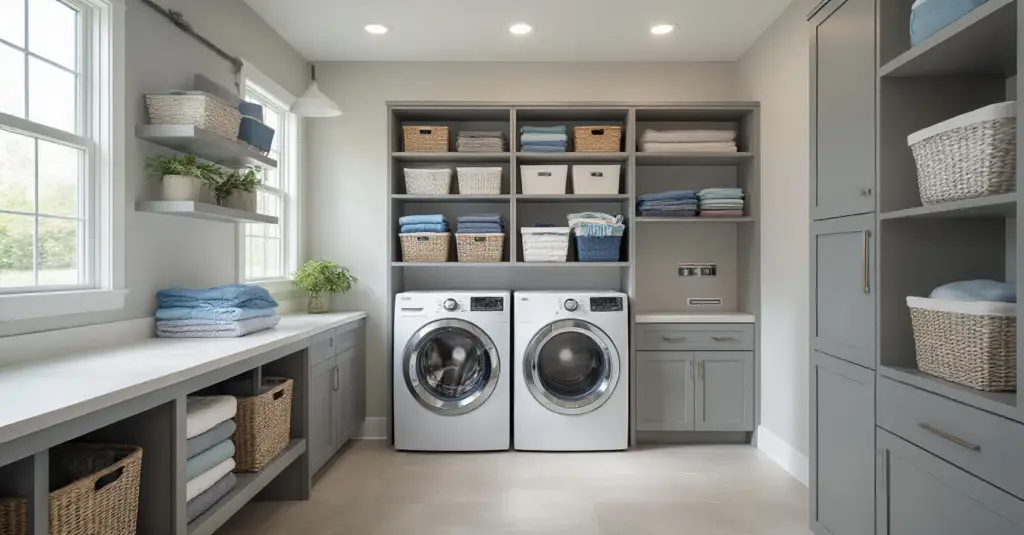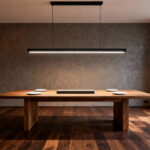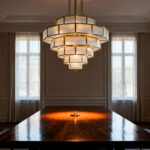Picture this: You’re standing in what is arguably the most neglected room in your home. The lighting is harsh, maybe a single bare bulb. Mismatched plastic bottles litter the top of the rumbling machines. It’s a space of pure utility, a room you enter to do a job and leave as quickly as possible. We accept this, because, well, it’s just the laundry room.
But what if it wasn’t? I used to think a room’s importance was dictated by how much time guests spent in it. Then, I had a client, a brilliant painter, who created the most serene and beautiful laundry room I’d ever seen. It was tiny, but it had gorgeous lighting, slate floors, and a single, stunning photograph on the wall. She told me, “I spend hours in here. Why shouldn’t it bring me joy?” It was a revelation. A utilitarian space is still a space you inhabit. And any space you inhabit is an opportunity to create a feeling, to express who you are, to be surrounded by beauty. Let’s talk about how to curate your laundry room, not just renovate it.
Foundational Planning & Smart Space Assessment (Part 1)
Before you pick a single paint chip, you have to understand the canvas. This initial phase isn’t about aesthetics; it’s about choreography and composition. We need to think about how you move, what tools you need, and what shapes will occupy the space. A gallery director wouldn’t hang a massive sculpture without first understanding the room’s sightlines and structural supports. We’re doing the same thing here, laying the groundwork for a space that is not only beautiful but feels effortless.
1. Assess Your Current Laundry Workflow & Identify Pain Points
Everyone thinks about the finished look, but I want you to first think about the movement. For one week, observe yourself. Where do you trip over the hamper? Where do you set down a bottle of stain remover because there’s no dedicated spot for it? This isn’t about time-saving in a corporate sense; it’s about making the process feel less like a frantic chore and more like a graceful, rhythmic task. You’re creating a dance, and right now, the choreography is clumsy.
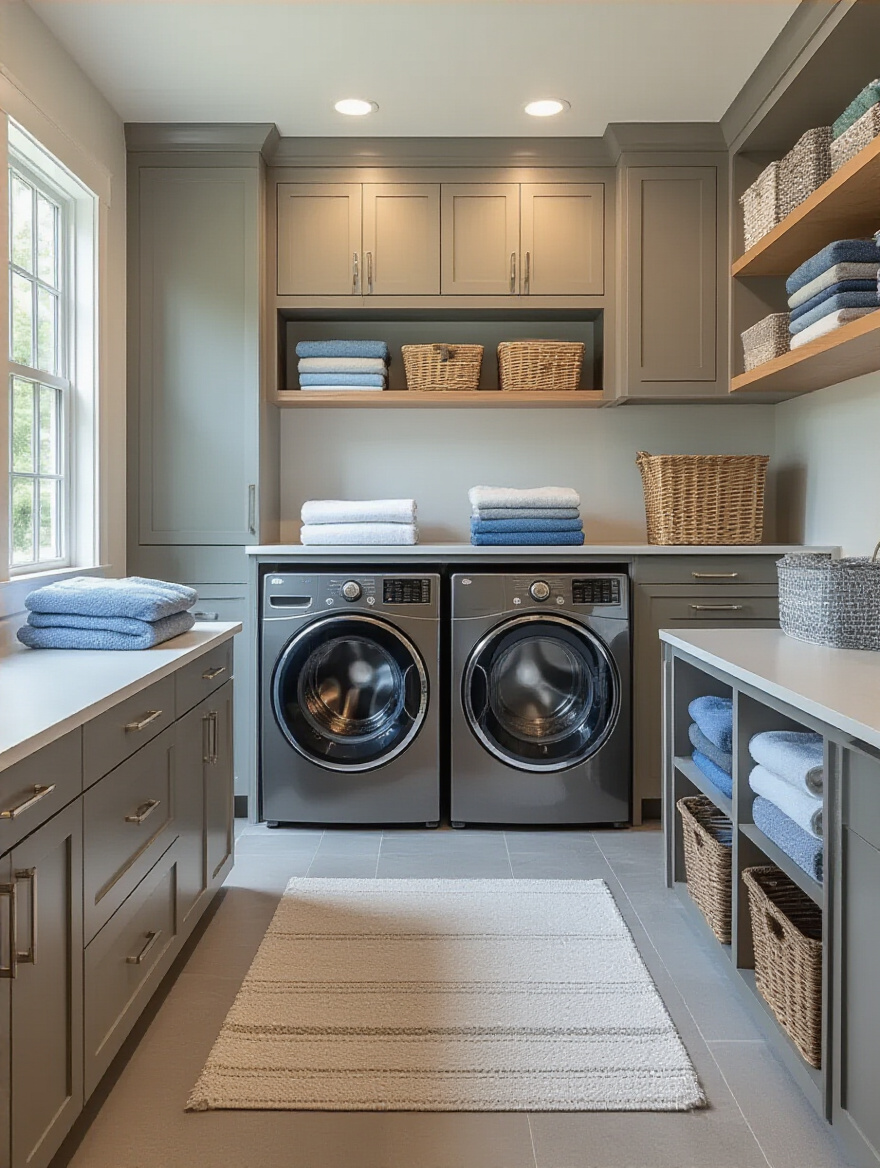
Your list of “pain points” becomes your curatorial brief. This is the document that guides every decision. A lack of folding space means a countertop becomes a non-negotiable part of the composition. Poor lighting means we prioritize a layered lighting plan. I once worked with a collector whose “pain point” was that he couldn’t see the subtle colors in his socks to sort them properly. It sounds trivial, but addressing it with high-quality, color-correct lighting transformed his daily experience in that room.
Thinking through these practical realities from the start ensures the final space is not just a pretty picture, but a masterpiece of function.
2. Define a Realistic Budget & Project Timeline
Let’s talk money. This isn’t the un-artistic part of the process; it’s the commission. When a museum commissions a work, the budget defines the scale, materials, and complexity. It’s a creative constraint, not a buzzkill. Be honest about your number, then build in a 15% contingency. I beg you, do not skip this. That contingency isn’t “extra money;” it’s the budget for the things you can’t see, like a plumbing issue hiding in the wall. It’s the cost of proper installation, which is just as important as the piece itself.
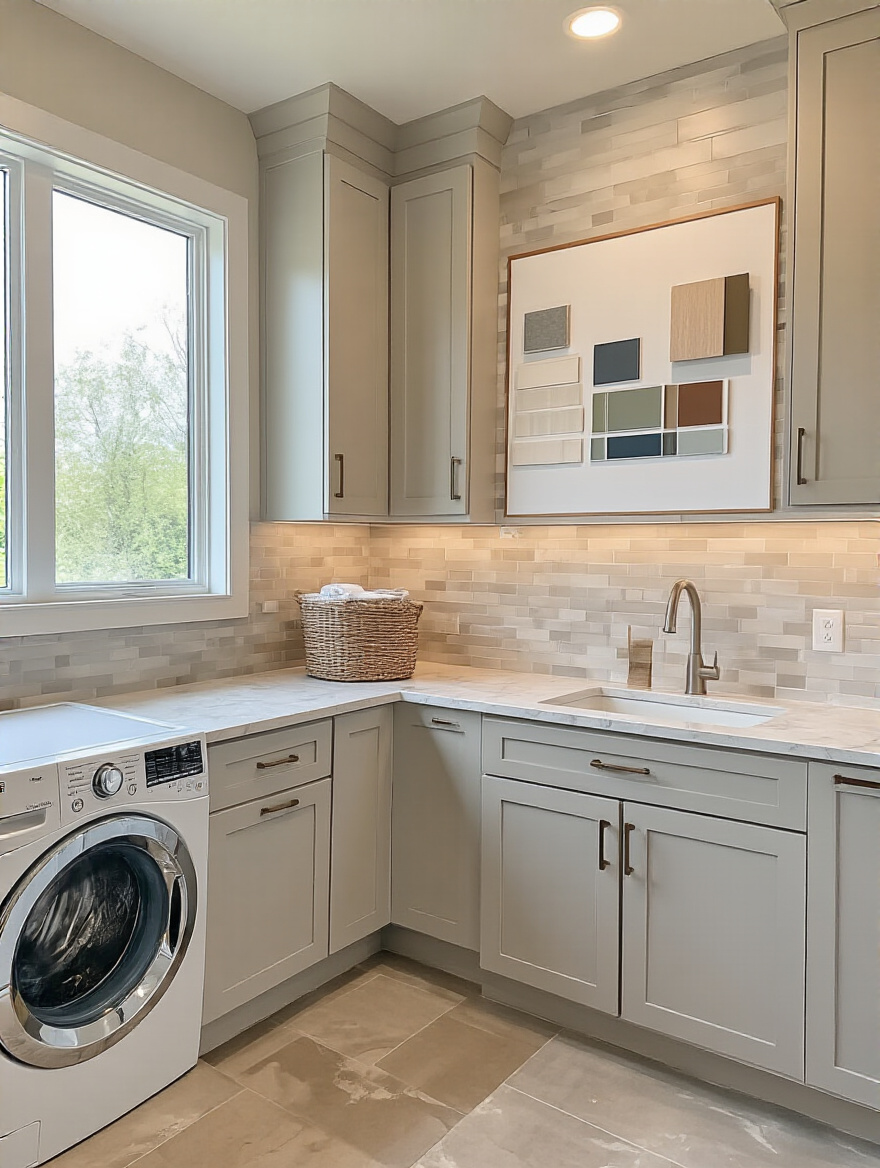
The noise everyone else talks about is cutting corners. They’ll tell you to just slap on a coat of paint. But true transformation comes from investing in the foundation. Think of it this way: a cheap, flimsy frame can ruin a priceless painting. Your budget should prioritize foundational elements—good plumbing, safe electrical, durable surfaces—before you even think about the decorative hardware. A clear budget and timeline give you the freedom to be creative within your means, without the stress of financial surprises.
Once your financial framework is set, you can truly focus on the artistic and functional vision for your new space.
3. Optimize Layout for Ergonomic Efficiency and Traffic Flow
Layout is simply another word for composition. In art, we use principles like the rule of thirds and leading lines to guide the viewer’s eye. In your laundry room, we use a similar idea—the “work triangle”—to guide your body. The goal is a composition where your washer, dryer, and folding surface are arranged in a way that minimizes steps and feels intuitive. The flow should be seamless, with no awkward corners or blocked pathways.
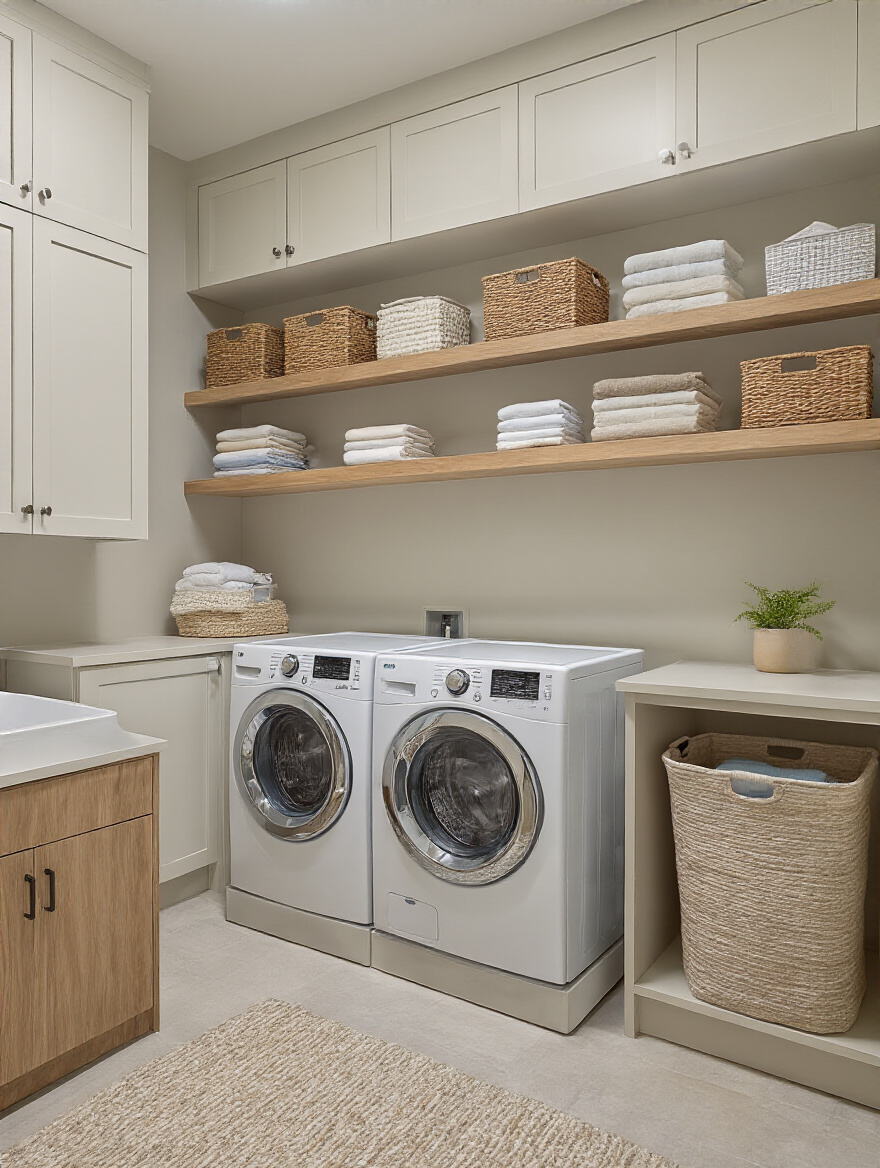
Get out the graph paper or a simple design app and play with the composition. Where do the large forms—the appliances—go? If you stack them, you create a strong vertical line, opening up floor space. If you place them side-by-side, you create a horizontal plane perfect for a beautiful countertop. Don’t just guess. Measure the swing of every door. A common mistake is forgetting that an appliance door or a cabinet door needs space to open fully, which can completely disrupt the flow you so carefully planned.
This careful planning of your room’s composition ensures that function and form work together in perfect harmony.
4. Research Space-Saving Appliance Options (Stackable vs. Compact)
The appliances are the primary sculptures in this room. Their finish, their lines, their scale—they will dominate the aesthetic. So many people just buy whatever is on sale, but I want you to see this as an artistic choice. Do you want the bold, modern statement of graphite-colored machines, or the quiet, integrated feel of white appliances that blend with white cabinetry?

Consider their form. Stackable units create a powerful vertical column, a totem of clean clothes. They’re incredible space-savers, freeing up the footprint for a utility sink or a storage bench. Compact, 24-inch models are the answer for tiny spaces, allowing you to tuck a fully functional laundry into a closet or a bathroom corner. Their smaller scale can make the entire room feel larger. Don’t just think about what fits; think about the shape and energy you want to create.
With your anchor “sculptures” chosen, we can now build out the rest of the gallery around them.
Foundational Planning & Smart Space Assessment (Part 2)
We’ve covered the big, visible forms. Now, let’s talk about the armature and the canvas—the invisible infrastructure and the foundational surfaces that everything else relies upon. Ignoring these is like ignoring the gesso on a canvas; the paint might go on, but it will never look right or last as long. This is the unglamorous but utterly essential part of creating a space that endures.
5. Plan for Essential Plumbing, Electrical, and Ventilation Updates
Nobody gets excited about plumbing, but it is the lifeblood of this room. The electrical wiring is its nervous system. Think of this step as prepping the studio. You need proper power, clean water lines, and good air circulation before you can even think about making art. Especially in older homes, this is not optional. Upgrading to a dedicated circuit for your dryer isn’t just a good idea; it’s a critical safety measure.
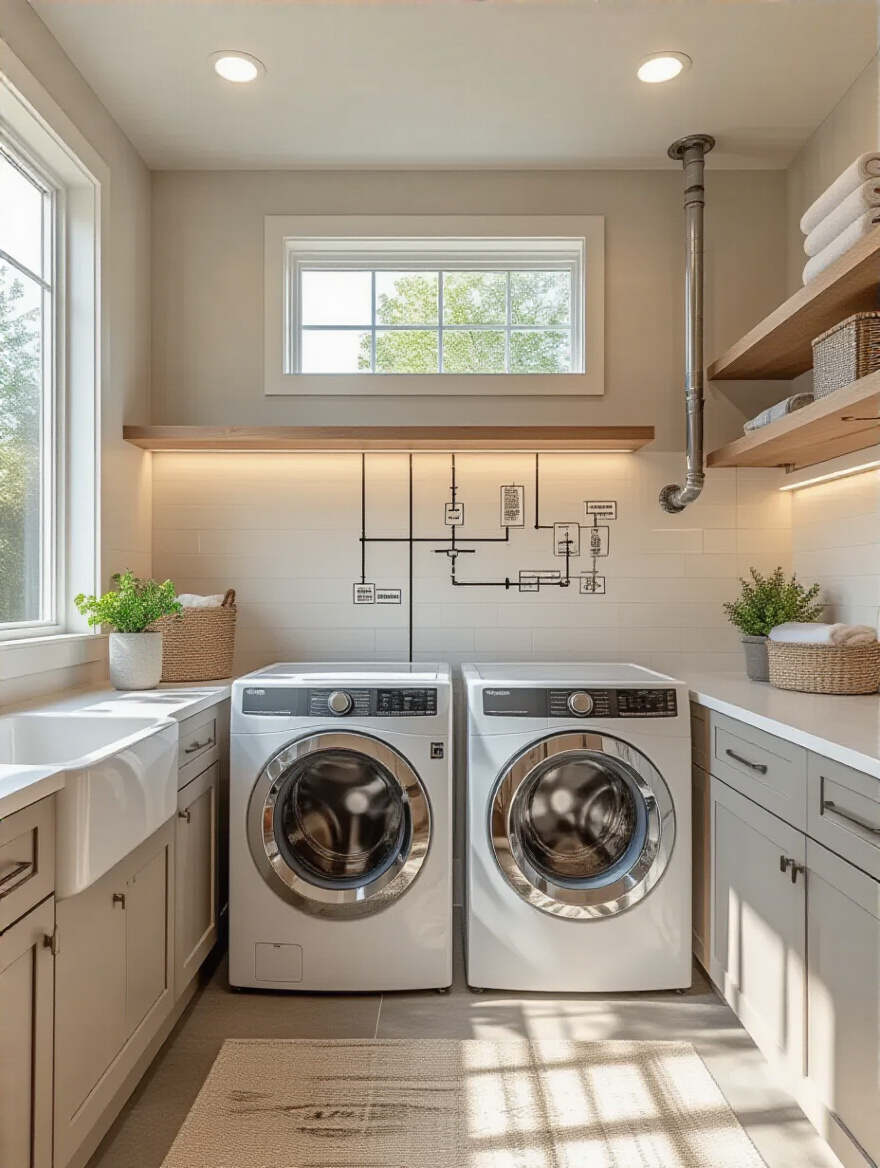
And ventilation? Can we talk about this? Proper ventilation is the difference between a fresh, clean-smelling room and a space that cultivates mold in the walls. That flimsy, foil-like vent hose is a fire hazard waiting to happen. Invest in a smooth, rigid metal duct that vents directly outside. A professional electrician and plumber are your most important collaborators at this stage. Trying to DIY this is one of the biggest mistakes you can make, with consequences far worse than a crooked picture frame.
With a safe and solid foundation, you can confidently move on to selecting the visible surfaces.
6. Select Durable and Moisture-Resistant Flooring Materials
Your floor is the canvas for the entire room. It sets the tone, the color story, and the texture. And because this is a laundry room, that canvas needs to be bulletproof. Forget about materials that can’t handle water, like standard laminate or solid hardwood. You are curating a space that must withstand the occasional spill or leak. This is where you want to look at materials like porcelain tile, luxury vinyl plank (LVP), or even polished concrete.
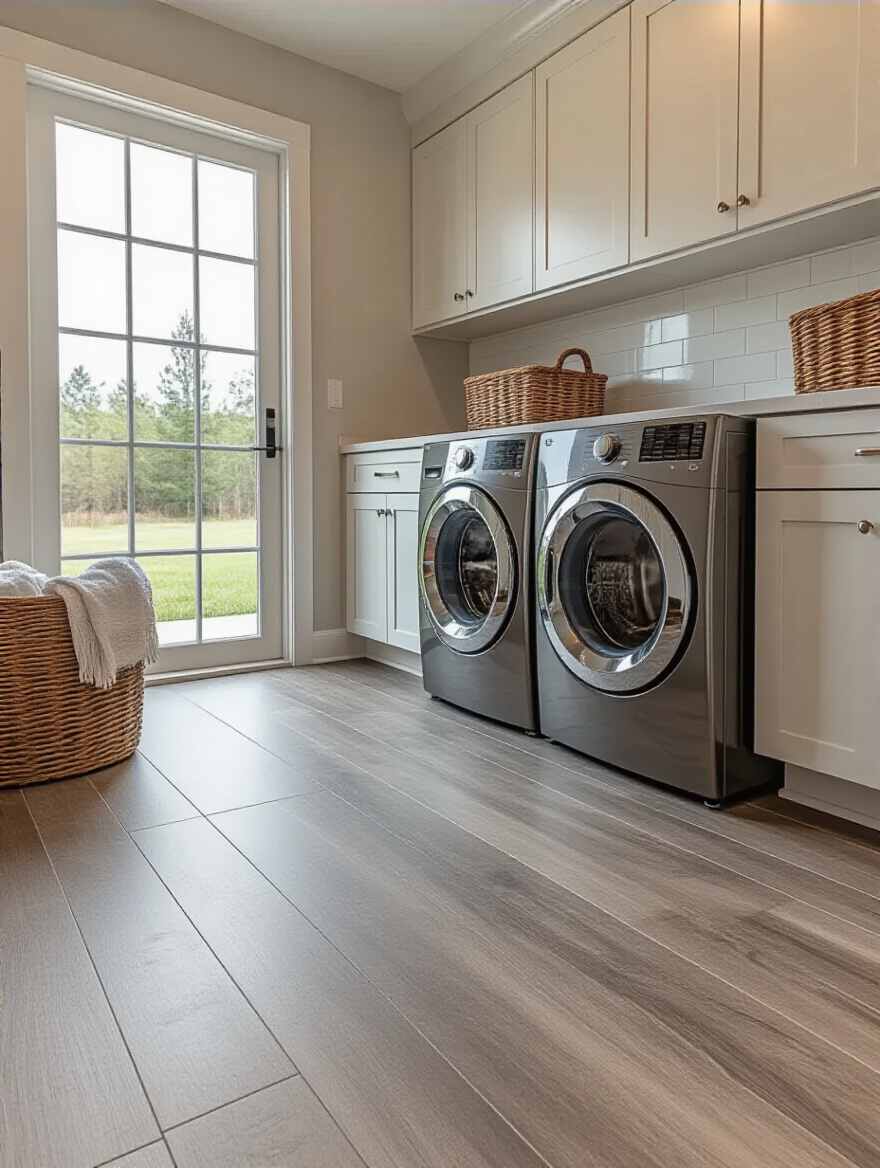
Think about the texture and pattern. Porcelain tile can mimic the look of natural stone, worn wood, or even fabric, adding a layer of visual sophistication. LVP is warmer underfoot and offers incredible realism in its wood and stone looks. I once saw a laundry room with a bold, encaustic-style patterned tile that became the room’s primary piece of art. The floor wasn’t just a floor; it was a statement. Don’t be afraid to make a strong choice here—it can define the entire space.
Now that our canvas is prepped and ready, we can start adding the functional furniture.
Implementing Functional Storage & Core Installations (Part 1)
With the foundation set, it’s time to build the “furniture” of the gallery—the cabinetry, shelves, and workstations that will hold your tools and supplies. This is where we marry pure function with intentional design, creating systems that hide the clutter and elevate the everyday.
7. Install Custom or Semi-Custom Cabinetry for Seamless Storage
Off-the-shelf cabinets are fine, but custom or semi-custom cabinetry is the difference between a generic poster and a perfectly matted and framed piece of art. It’s tailored to your exact space, making use of every inch and creating a seamless, integrated look. This allows you to build around your appliances, hide unsightly hookups, and create storage that perfectly suits your needs, whether it’s a tall cabinet for an ironing board or deep drawers for sorting bins.

This is also your chance to make a major aesthetic statement. Are the cabinet fronts flat and minimalist, or are they a traditional shaker style? What about the hardware? Cabinet pulls are the jewelry of the room. A simple brass knob or a long, matte black pull can completely change the feeling of the space. Treat the selection of your cabinetry as you would the selection of a major piece of furniture. It is both a workhorse and a thing of beauty.
Thoughtful cabinetry sets the stage, creating an organized backdrop for the more personal touches to come.
8. Incorporate Open Shelving for Accessible Supplies and Decor
While cabinetry is for hiding, open shelving is for displaying. This is your chance to curate a “shelfie” moment. But here’s the secret: it requires discipline. Open shelving looks amazing when it’s styled with intention, and a complete disaster when it’s not. The trick is to decant. Get rid of the ugly branded packaging and put your laundry pods, powdered detergents, and fabric softeners into beautiful, uniform containers—clear glass jars, white ceramic canisters, woven baskets.
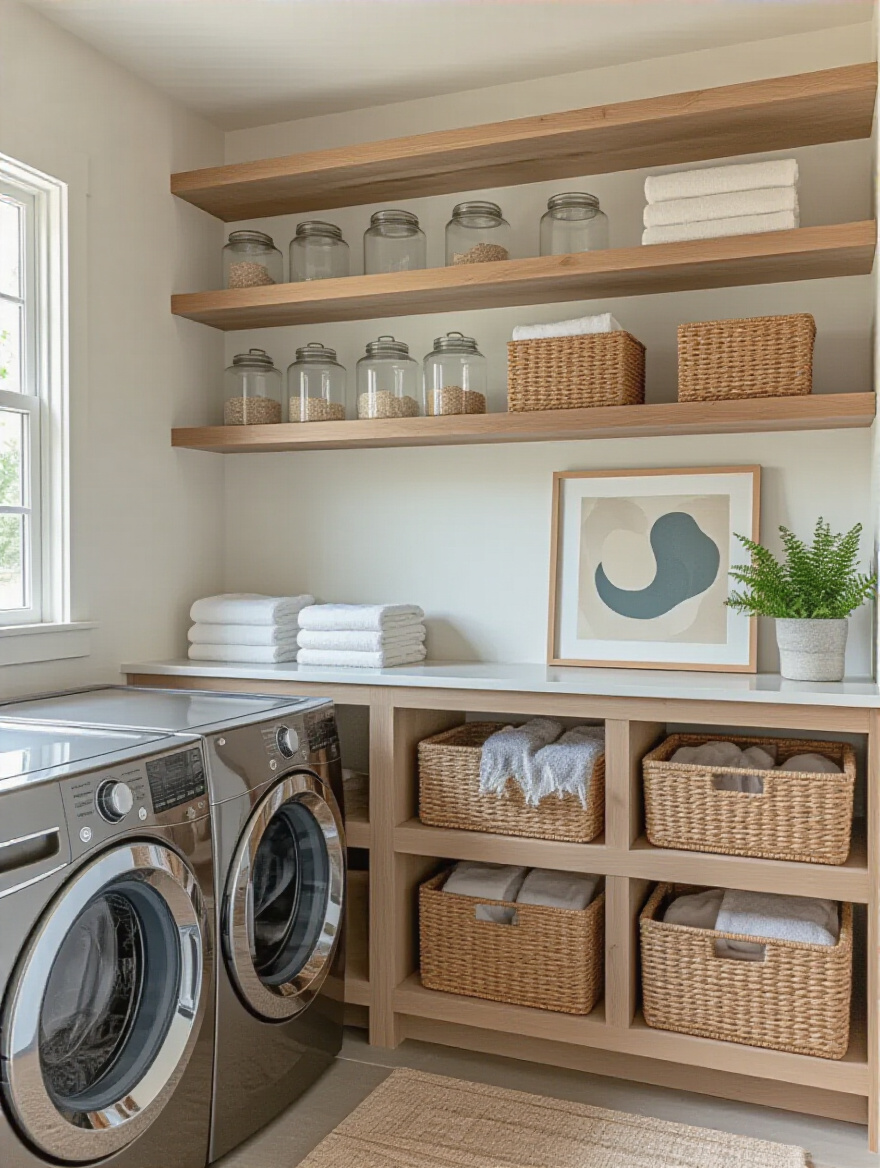
Group these useful objects with a few purely beautiful ones: a small piece of pottery, a trailing plant, a framed postcard from a favorite trip. This is how you elevate the mundane. You’re essentially creating a series of small still-life compositions on your shelves. It tells a story and injects your personality into the most unexpected of places. It’s a daily reminder that beauty can be found anywhere, even in a box of soap.
This balance of hidden and displayed storage creates a dynamic and personalized environment.
9. Designate Specific Zones for Sorting, Pretreating, Washing, & Drying
Instead of thinking of the room as one big messy space, think of it as a series of small, dedicated vignettes. Create a zone for sorting, with clearly labeled hampers for whites, darks, and delicates. Design a pretreating station next to the sink, with your spot removers and brushes neatly arranged on a small tray. The area around your machines is the washing and drying zone. And finally, you need a clear, dedicated surface for folding and stacking.
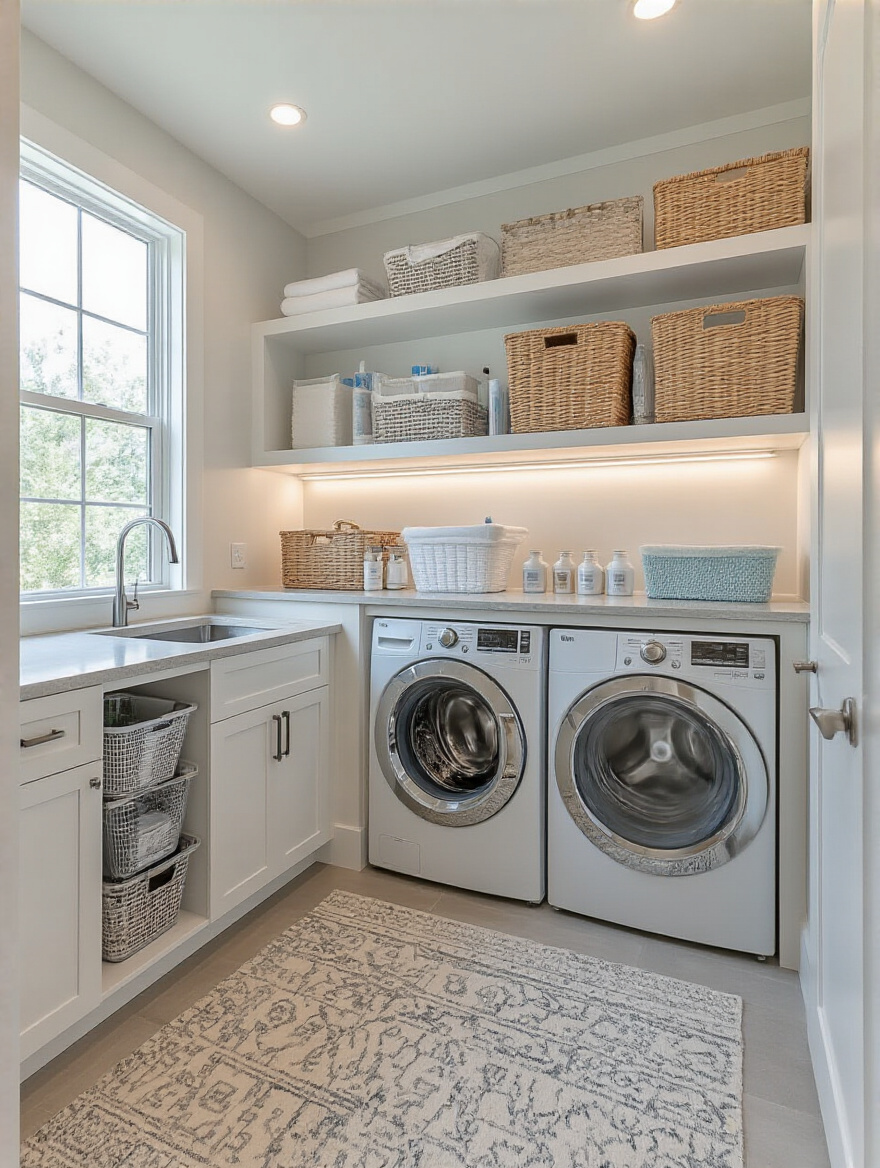
By giving each task its own “home,” you create a sense of order and purpose. The physical separation of tasks creates mental clarity. You’re no longer just tackling a chaotic pile of clothes; you’re moving through a series of calm, organized stations. It’s a subtle mental shift, but it transforms the entire experience from overwhelming to manageable. I once helped a client install a beautiful butcher block counter over their front-loaders, and she called it her “folding island”—a little sanctuary of order in the chaos of family life.
Creating these zones brings a gallery-like intentionality to the room’s flow, making every action feel more deliberate.
10. Select a Deep Utility Sink for Versatile Handwashing & Cleanup
The utility sink is often an afterthought, but it can be a stunning focal point. Forget the flimsy plastic tubs you see in basements. Think of a deep, gorgeous farmhouse sink made of fireclay, or a sleek, undermount stainless steel basin paired with a sculptural, high-arc faucet. This is a functional object that can and should be beautiful. Its purpose is practical, yes—for hand-washing delicates, soaking stained clothes, or even washing a small pet—but its form is a major design opportunity.
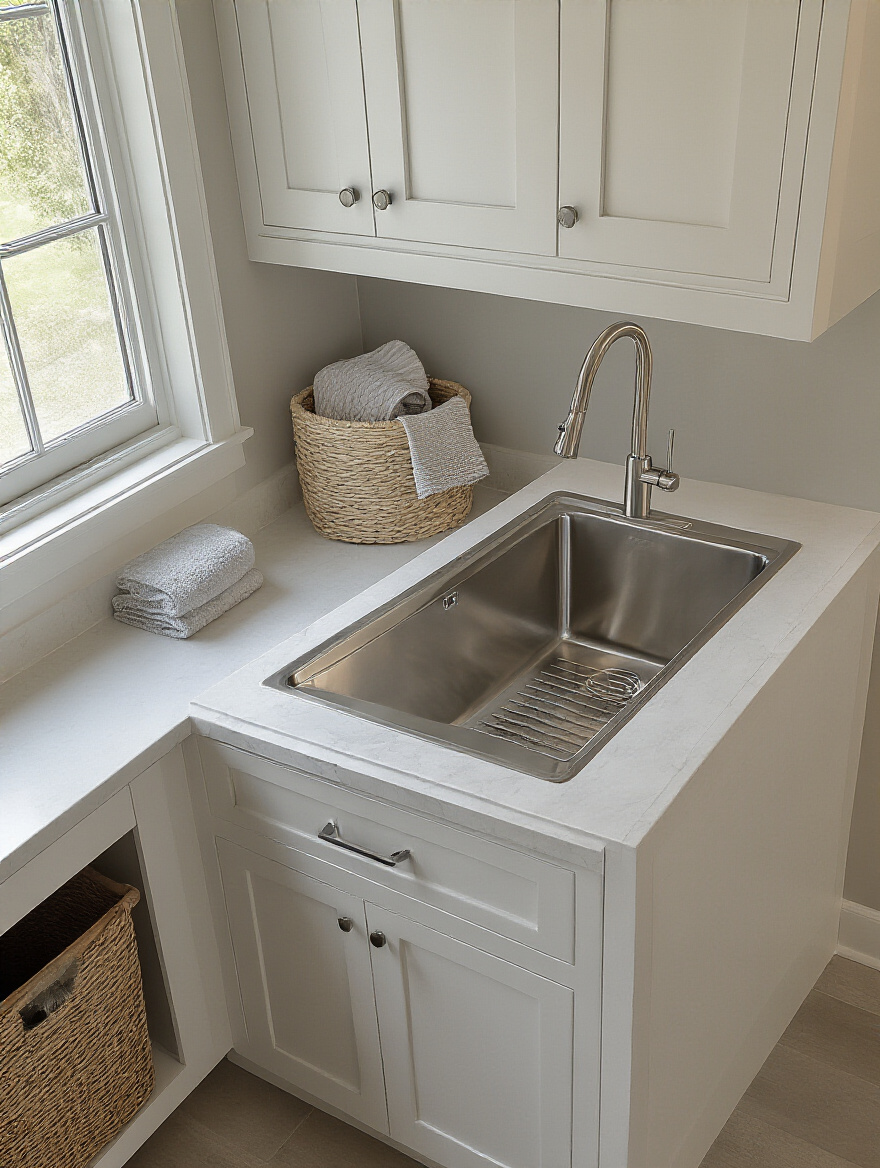
A deep basin is key because it contains splashes and is genuinely useful for large items. But the material and the fixture are what make it special. I’m a huge fan of gooseneck faucets with a pull-down sprayer in a contrasting finish. Imagine a moody, dark green laundry room with a crisp white fireclay sink and a warm brass faucet. It’s functional, yes, but it’s also dramatic and chic. It becomes a piece of functional sculpture in the room.
Pairing beautiful form with robust function is the essence of great design, a principle we can extend to even more specialized features.
Implementing Functional Storage & Core Installations (Part 2)
Now we move into the ingenious details—the clever, multi-functional pieces that solve specific problems. These are the hidden gems of the room, the elements that make you think, “Wow, someone really thought about this.” They are the secret weapons that make the space not just look good, but work brilliantly.
11. Add a Retractable or Fold-Down Drying Rack for Delicates
A freestanding drying rack is a necessary evil—it’s bulky, ugly, and always in the way. An integrated drying rack, on the other hand, is pure genius. There are so many elegant solutions now, from wall-mounted racks that fold out like an accordion to ceiling-mounted pulley systems that have a wonderful, old-world charm. My personal favorite is the shallow drawer that pulls out to reveal a series of drying rods.
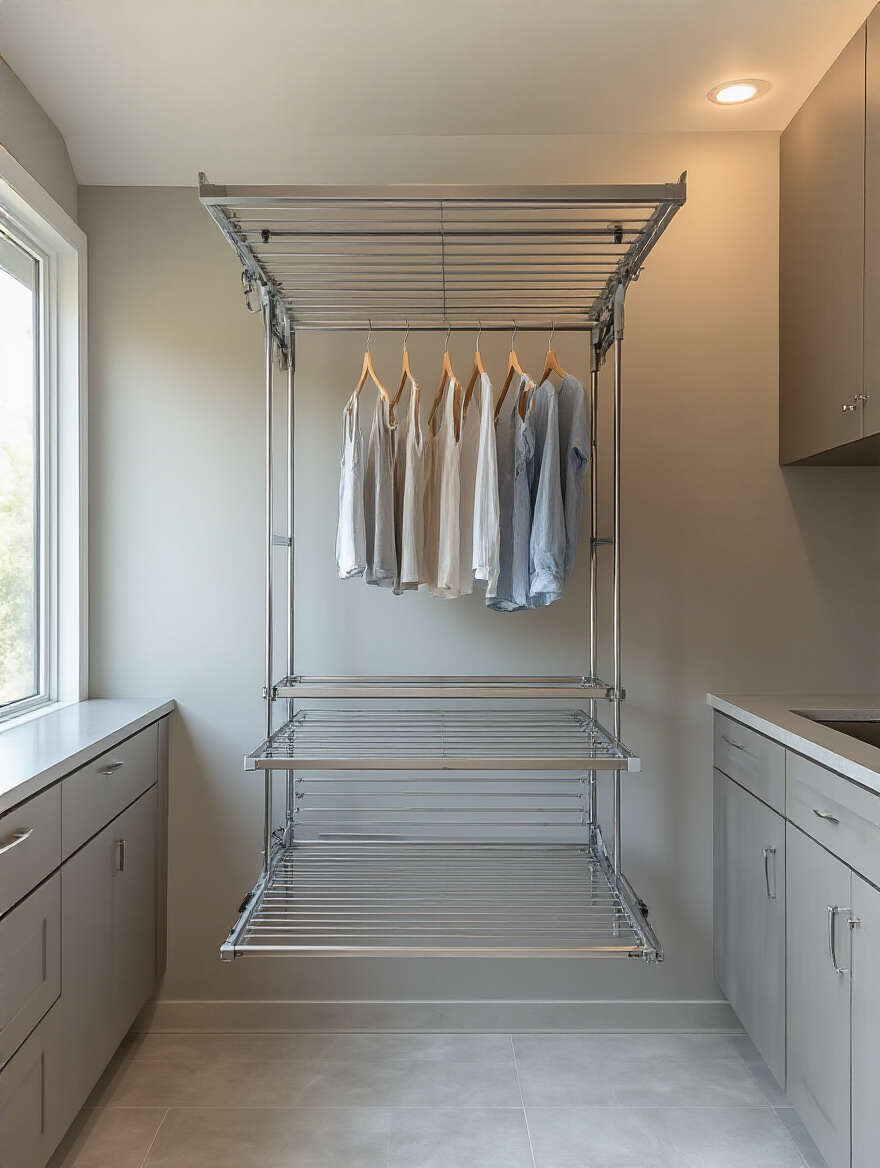
These solutions provide essential functionality without creating permanent visual clutter. They are there when you need them and disappear when you don’t. It’s a bit of design magic. It respects the need for a clean, uncluttered aesthetic while still providing a deeply practical tool. It’s the perfect marriage of form and function, a kinetic sculpture that serves a purpose.
This idea of hidden utility can be applied to another common laundry room eyesore: the ironing board.
12. Integrate an Ironing Station or pull-out ironing board
Much like the drying rack, the ironing board is a clumsy object we’d rather not look at. Integrating it into the room’s design is one of the most satisfying upgrades you can make. Imagine a shallow cabinet on the wall that opens to reveal a fold-down ironing board, complete with a spot for the iron and a built-in electrical outlet. Or a pull-out version hidden inside a drawer, ready to use in seconds.
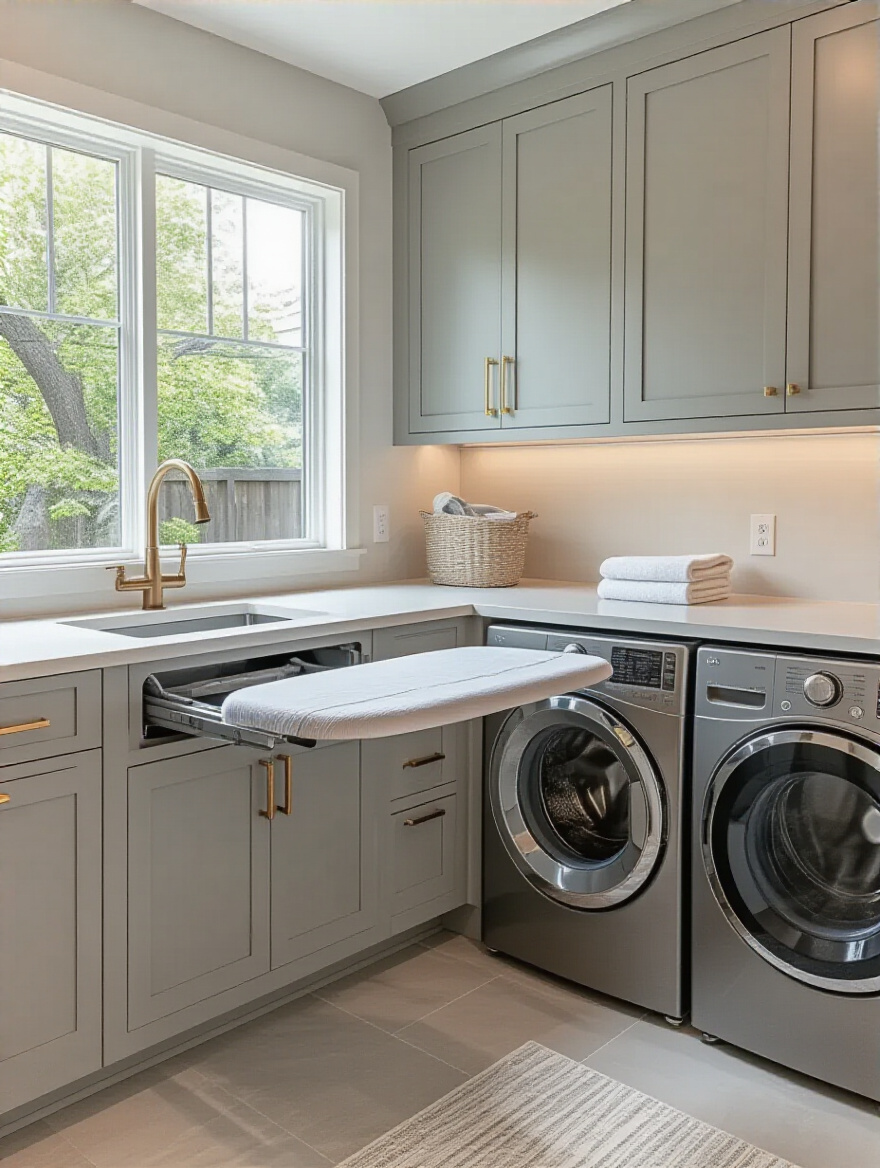
This completely eliminates the hassle of dragging a board out of a closet and setting it up. It makes a tedious chore that much easier, which means you’re more likely to do it. It’s a perfect example of how thoughtful design can have a real, tangible impact on your daily routine. By hiding this tool in plain sight, you maintain the serene, curated look of your room while keeping everything you need right at your fingertips.
Now that the core functional pieces are in place, we can focus on the layers that bring the room to life.
Enhancing Aesthetics & Optimizing Daily Organization (Part 1)
This is my favorite part. The foundation is built, the functional sculptures are installed. Now, we get to apply the layers that create mood, personality, and soul. This is where we play with light, color, and texture to transform a functional room into a space that feels truly special.
13. Optimize Lighting with a Mix of Task and Ambient Fixtures
Lighting is everything. It is the single most powerful tool you have to transform a space, and it is almost always done poorly in a laundry room. You need layers of light, just like in a gallery. Start with good ambient light from a central ceiling fixture to provide overall illumination. But please, don’t stop there. The real magic comes from task lighting.
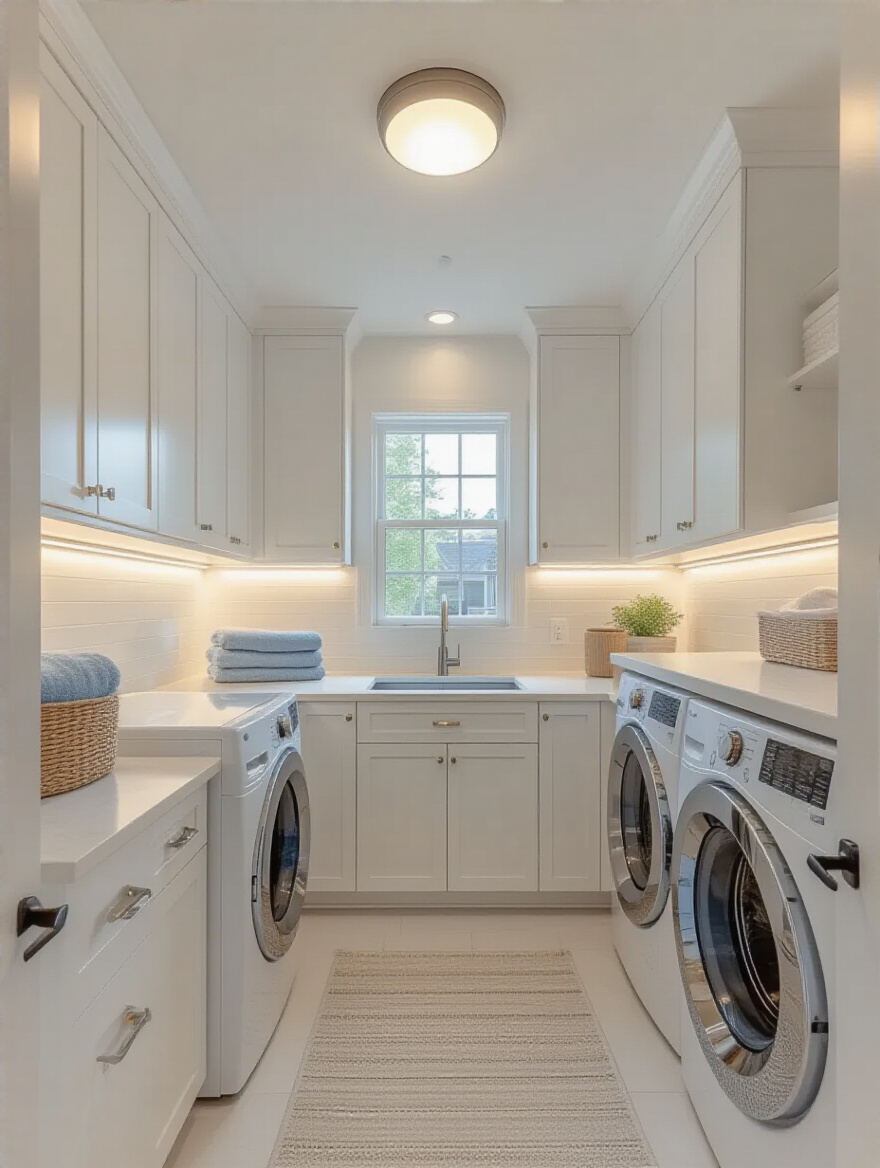
Install an LED strip under your upper cabinets to wash the countertop in clear, shadow-free light. This is critical for stain treating and folding. And here’s the curator’s secret: pay attention to the CRI, or Color Rendering Index, of your bulbs. A high CRI (90+) means the light renders colors accurately, so you won’t mistake navy for black when you’re sorting. A beautifully lit room is not only more functional but also feels warmer, cleaner, and more inviting.
Great lighting sets the mood, and the color palette is what gives that mood its specific character.
14. Choose a Cohesive Color Palette and Decor Theme
A laundry room is the perfect place to be bold with color. Since it’s a small, enclosed space, you can use a deep, saturated color that you might be too timid to use in a larger room. Imagine a moody teal, a warm terracotta, or even a dramatic charcoal. A bold color on the walls or cabinetry can turn a boring box into a jewel box. Alternatively, a soft, monochromatic palette of whites, creams, and grays can create an atmosphere of spa-like serenity.
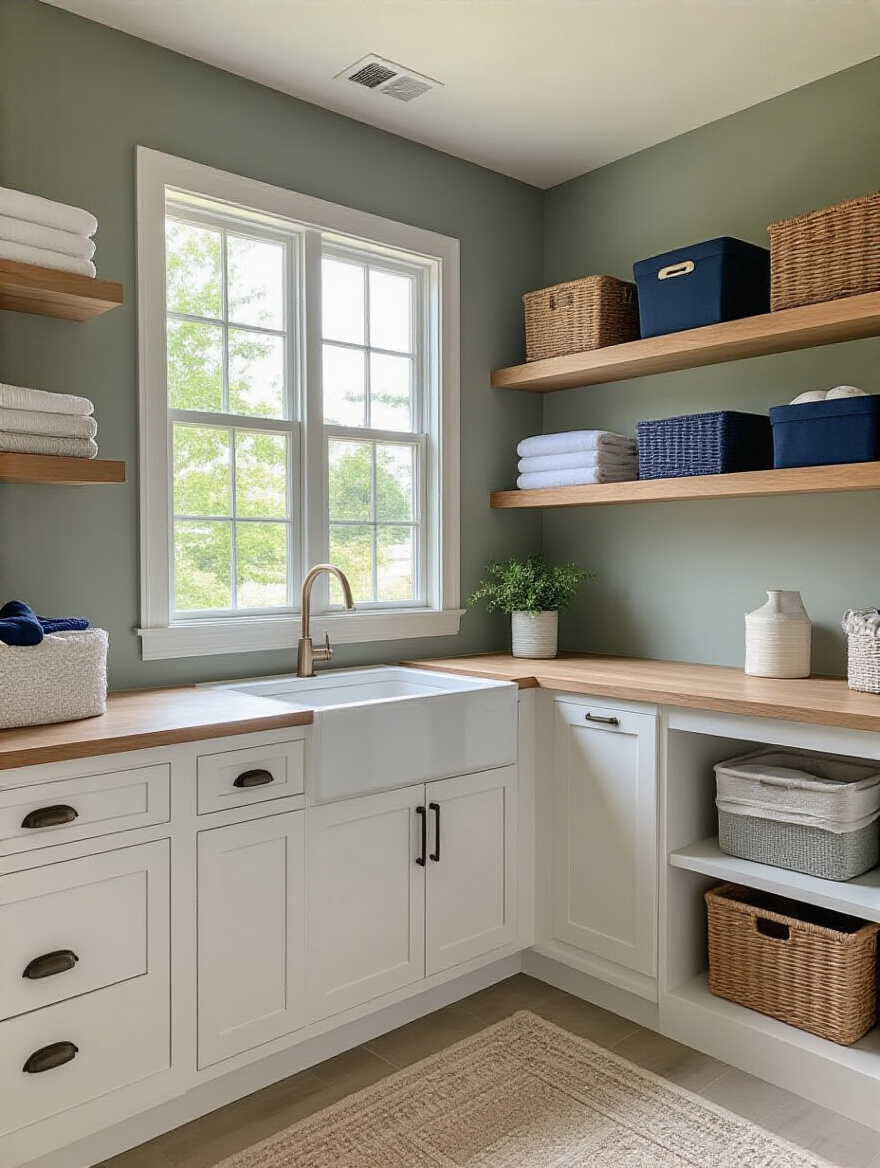
The key is to be intentional. Choose a palette of two or three colors and carry it through the entire space—from the walls to the storage containers to the floor rug. This creates a cohesive, curated feel. I once saw a laundry room where the owner had painted the walls, ceiling, and trim all the same shade of soft, dusty rose. It felt like being inside a seashell—it was unexpected, immersive, and utterly beautiful.
Your chosen color story will be enhanced by the textures you introduce.
15. Utilize Stylish Baskets, Bins, and Jars for Organized Supplies
We touched on this with open shelving, but it’s a principle that applies everywhere. Organization doesn’t have to look utilitarian. Swap out plastic for natural textures. Use woven seagrass baskets for towels, felt bins for cleaning rags, and glass jars for clothespins. These objects aren’t just for storage; they are tactile, sculptural elements that add warmth and character.
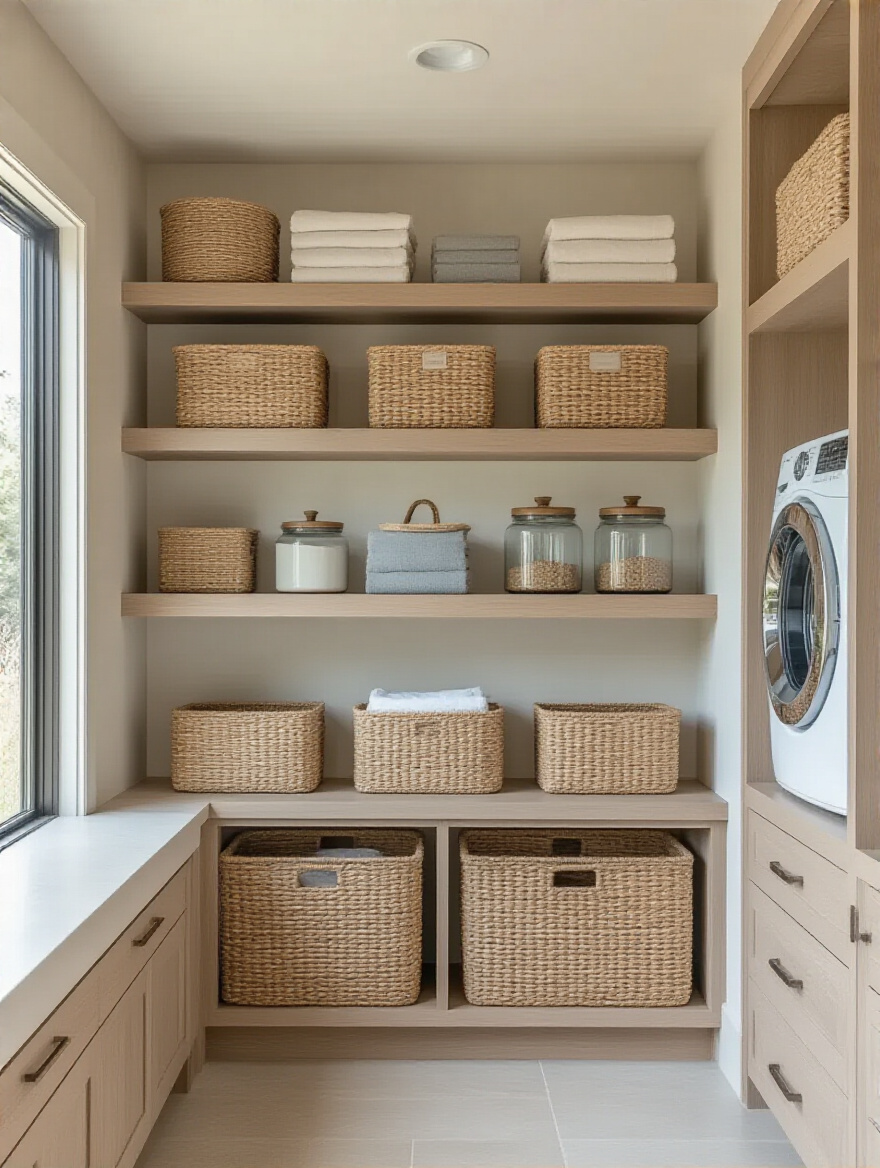
Think about creating a collection. Maybe you choose all light-toned natural materials, or perhaps you go for a series of sleek, matte black metal containers for a more industrial look. By using a family of materials, you create a sense of rhythm and repetition that is visually calming and sophisticated. You’re replacing the visual noise of random packaging with a harmonious arrangement of beautiful, functional objects.
These small, curated objects are made even more useful with simple, linear additions.
16. Mount Wall Hooks and Rods for Hanging Garments and Tools
Think of wall hooks and rods as lines drawn on your canvas. They are simple, functional elements that can also be incredibly stylish. A simple Shaker-style peg rail painted the same color as the wall is a classic for a reason—it’s minimalist, beautiful, and endlessly useful for hanging delicates, dustpans, or a tote bag for dry cleaning. A single, sturdy rod installed between two cabinets or walls can serve as a drying rack for shirts on hangers.
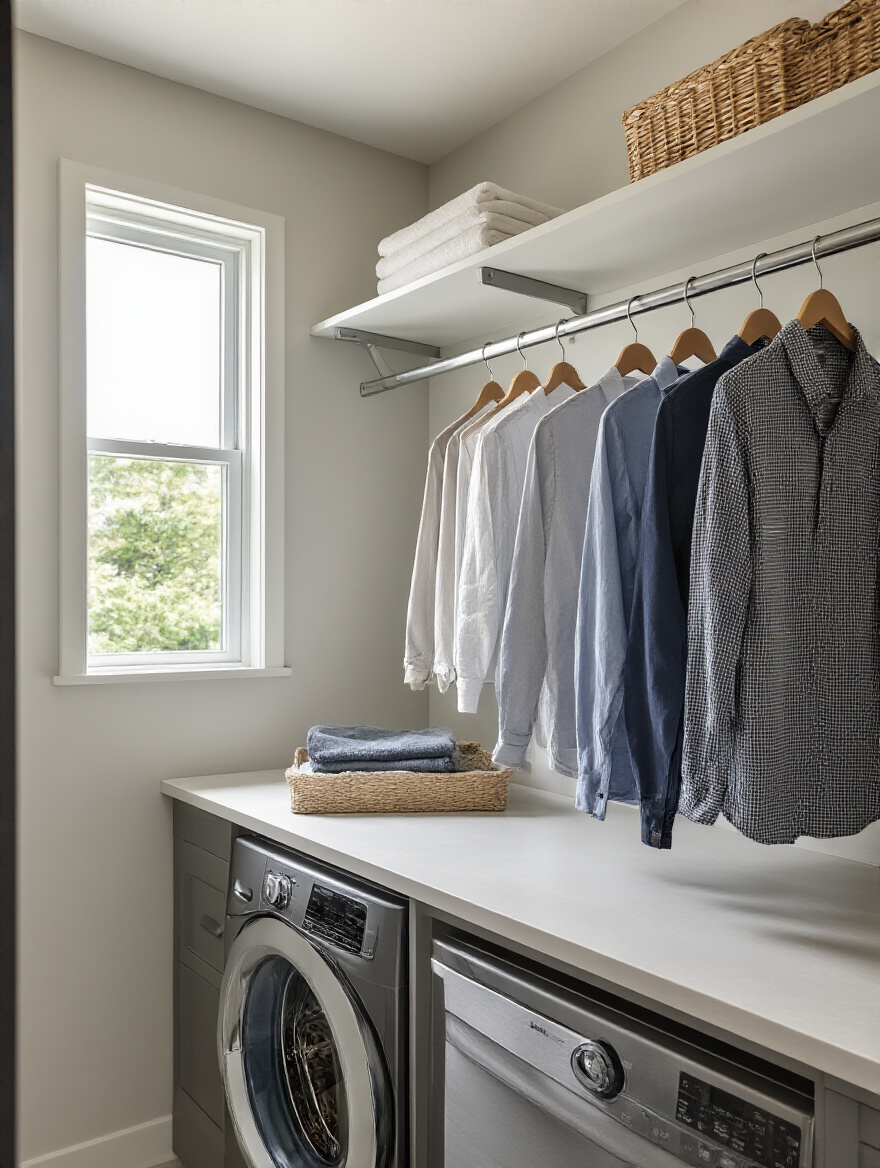
Don’t just default to standard chrome. This is another opportunity to reinforce your design theme. A matte black rod feels modern and graphic. A warm brass rod feels elegant and classic. Even the hooks themselves can be sculptural. There are beautiful, simple wooden dowel hooks or minimalist metal designs that feel like small pieces of art. These are the functional details that show a space has been truly considered.
These additions contribute to the final layer of polish that makes a room feel truly complete.
Enhancing Aesthetics & Optimizing Daily Organization (Part 2)
We’re at the finish line. This is about the final details and the long-term care of your newly curated space. A great exhibition doesn’t end the day it opens; it requires ongoing care to ensure it looks just as good on the last day as it did on the first. These final steps are what make your beautiful design sustainable.
17. Install Task-Specific Accessories (Lint Bins, Detergent Dispensers)
This is about finding an elegant solution for every little need. Where does the dryer lint go? Instead of just tossing it in the trash, what about a sleek, wall-mounted bin right next to the dryer? There are even magnetic ones that stick right to the machine. Where do you put your detergent? A set of beautiful, refillable glass or ceramic dispensers with pumps eliminates messy spills and ugly plastic jugs.
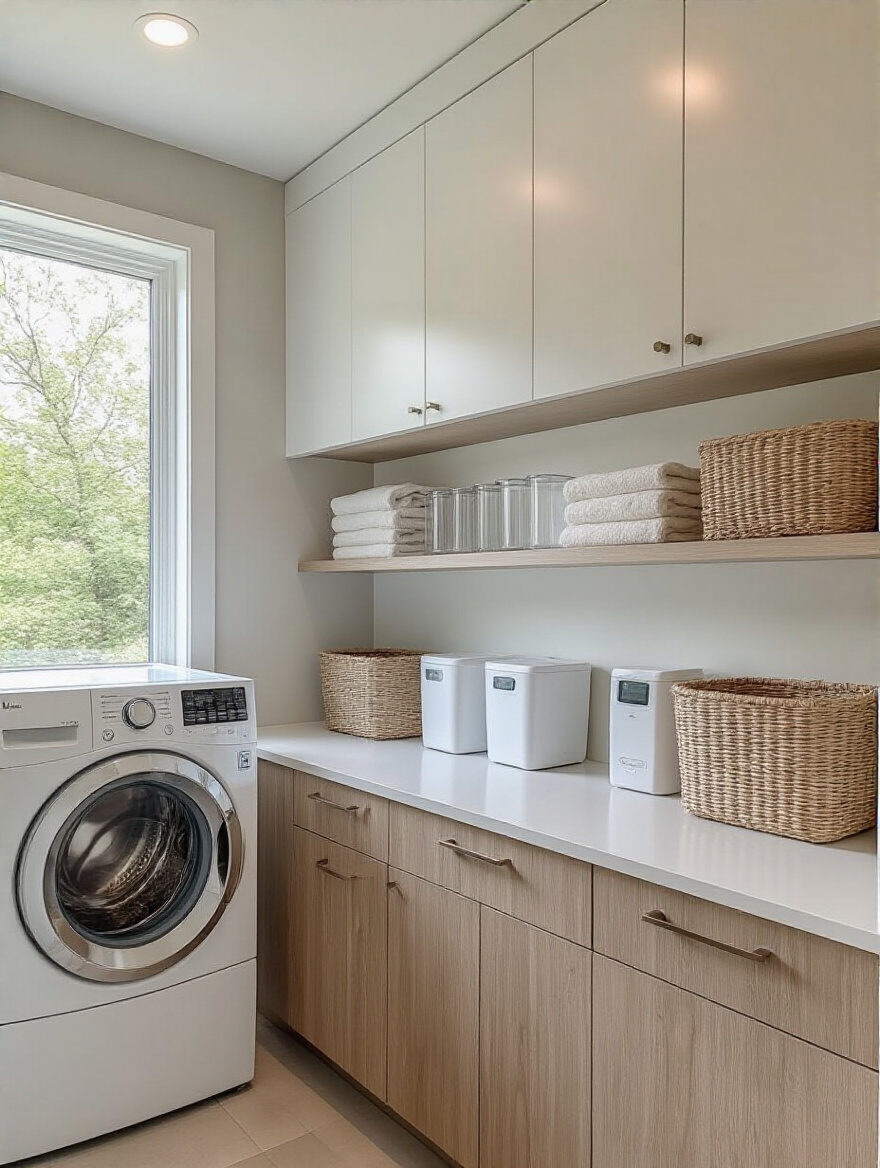
These small, task-specific accessories are what take a room from “nice” to “brilliant.” They show a deep level of thought about the actual experience of using the space. Each one solves a tiny, annoying problem with a simple, often beautiful, object. It’s the final layer of curation, where you ensure that every single element in the room has a purpose and a place.
Finally, you need a plan to keep this beautiful space looking its best.
18. Create a Smart Maintenance Schedule for Long-Term Cleanliness & Function
You’ve just commissioned a beautiful, functional work of art for your home. Now you have to protect it. A maintenance schedule isn’t a chore; it’s a preservation plan. Create a simple checklist of weekly, monthly, and annual tasks. Weekly: wipe down surfaces, clean the dryer’s lint screen. Monthly: run a cleaning cycle on your washing machine. Annually: deep clean the dryer vent hose (this is a crucial fire safety step!).
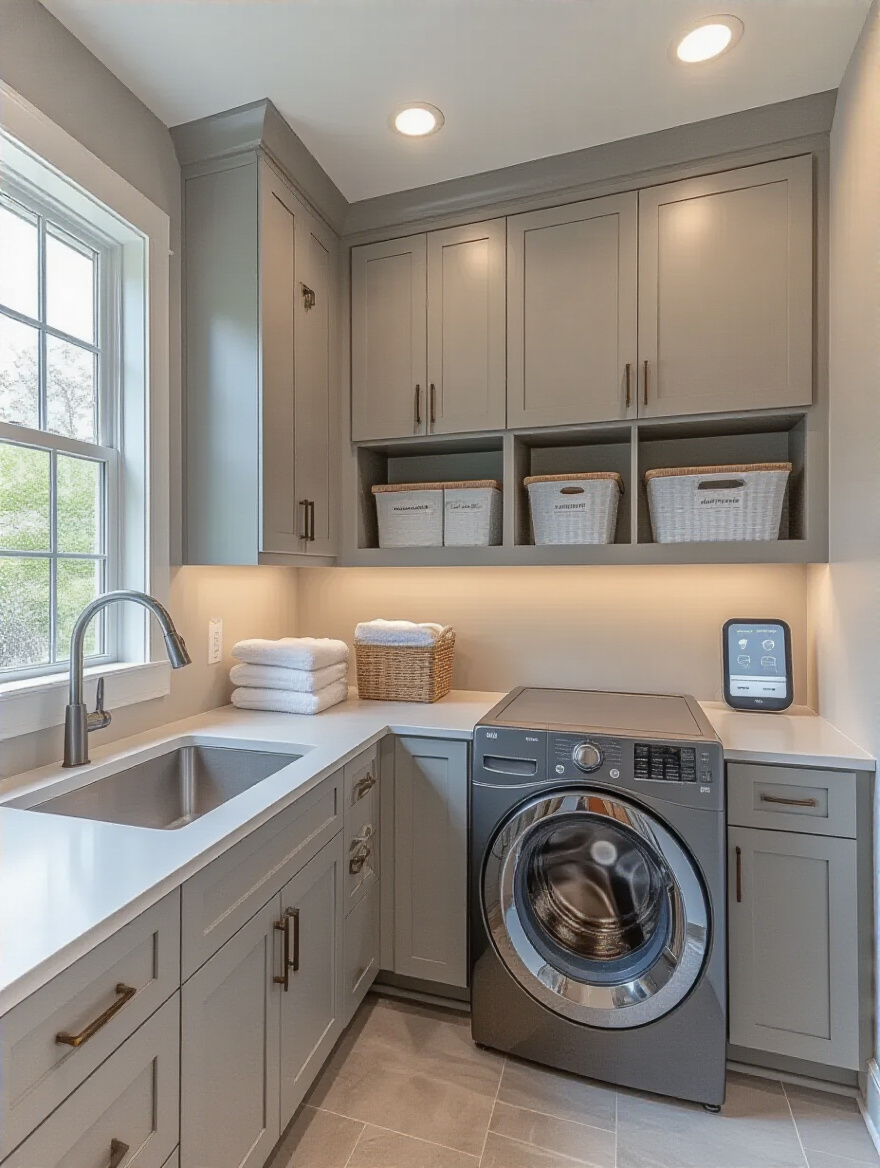
Set recurring reminders on your phone or put a laminated checklist inside a cabinet door. The goal is to make these tasks an automatic part of your routine. By consistently caring for your appliances and surfaces, you extend their life and keep the room feeling as fresh and inspiring as the day you finished it. A little bit of regular maintenance is all it takes to protect your investment and ensure your beautiful space continues to bring you joy for years to come.
Conclusion
Transforming your laundry room isn’t just about new appliances and a coat of paint. It’s about seeing the potential for beauty, function, and personal expression in a space you previously ignored. It’s an act of curation. By thinking like a curator—considering composition, light, color, and texture—you can create a room that not only streamlines a chore but actively brings you a moment of peace and joy in your day.
You don’t have to do all 18 of these things at once. Start with one. Start with lighting. Start by decanting your detergent into a beautiful jar. See how that one small, intentional act of beauty changes how you feel in the space. Trust your instincts. Create a room that reflects you. Because a home that is truly yours is a work of art, right down to the last, forgotten corner.
